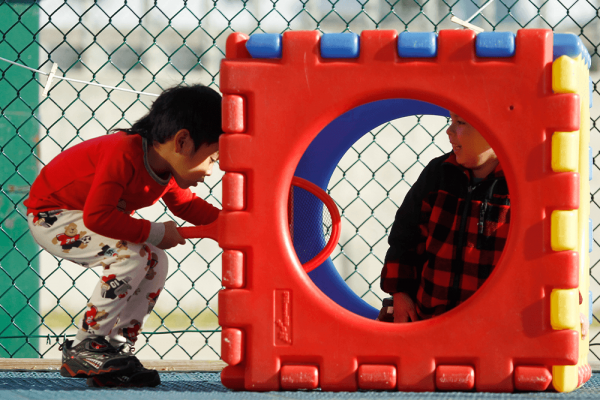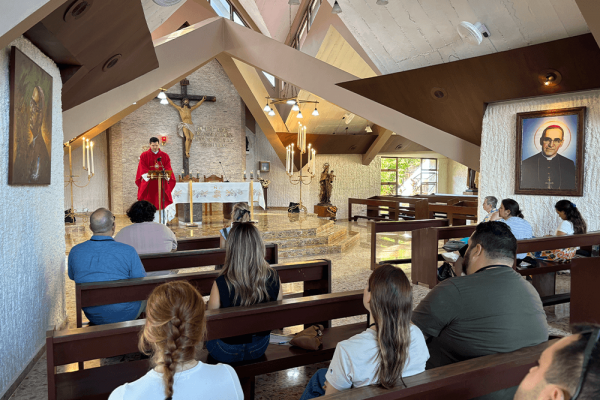In Proverbs 22:6, the author commends parents and educators to “train up a child in the way he should go: and when he is old, he will not depart from it.” Yet thanks to harsh school punishment policies, including suspension for preschoolers, many children are being trained to see their own typical emotional or academic frustrations as cause for strict discipline — or even incarceration.
Yasmine-Imani McMorrin remembers the first time she felt like her own childhood mischief was cast by adults as budding criminality. She was in elementary school, and she and her friends wrote in pencil on the bathroom stall. When the teacher asked, McMorrin confessed — not even ratting out her friends, she said. The conversation turned to what kind of path she was on, her underlying values and morals, and the slippery slope of vandalism.
The minor graffiti might have been addressed through amends-making and a good eraser. Instead, McMorrin said, she was suspended. That’s not unusual for children of color, she explained. Data supports that adults interpret the same behaviors from Black children as more dangerous than those behaviors from white kids — a projection that starts as early as preschool.
As the present-day education equity director for California’s office of the Children’s Defense Fund, McMorrin has led a project that encourages young people in Los Angeles County to share stories of their first encounters with school-based punitive action and the events that led them to some form of incarceration. The project, “How to Dismantle the School to Jail Track,” includes self-reported stories from youth and policy recommendations based on their experiences.
The Children’s Defense Fund is a nonprofit child advocacy organization that aims to protect children from poverty, abuse, and neglect, while ensuring “their access to health care, quality education and a moral and spiritual foundation.” The story mapping website puts names and specifics on the data about the school-to-prison track. By featuring the actual voices and handwriting of young people, it allows visitors to see the cultural phenomenon as the deeply personal and disruptive reality that it is.
A student named Mora recounted an educational history of dislocation and upheaval that eventually made it difficult to stay on track academically. “So like that’s when I just started to take out my frustration on the teachers. And um, I started like, when I don’t understand anything, I used to didn’t ask for help, so I would just shut down and I didn’t want it. And that’s when things really got hard.”
All of the youth’s stories reflect how emotional or academic frustration can lead to alienation, which eventually ends in disciplinary action, and in some cases incarceration. Individual teachers or mentors might give a boost toward better outcomes along the way, but the system itself — its policies and practices — always seems ready with the counterpunch. Many of the kids had been on that roller coaster for most of their lives.
The school-to-jail track, sometimes called the school-to-prison pipeline, is a well-documented phenomenon by which children — overwhelmingly children of color and disproportionately boys — are pushed out of the classroom through exclusionary discipline and begin to either fall behind academically or become alienated from the support needed to get them through school. It often begins with experiences like McMorrin’s, and sometimes even earlier.
Research from the Office of Civil Rights showed that in 2014, Black children made up 18 percent of preschoolers, but represented nearly half of all out-of-school suspensions. Preschool boys are suspended more often than girls. However, Black, Native Hawaiian, and Pacific Islander girls are given out-of-school suspensions at a higher rate than girls in other racial or ethnic groups.
The suspension or expulsion of preschoolers sets a terrible precedent, McMorrin said. “If you can suspend a preschooler, it opens the door for so much else.”
A growing number of states have established either policy or state agency guidance to reduce preschool suspension, and categories like “defiance” and “disruption” as grounds for suspension or expulsion in school disciplinary codes have also come under closer scrutiny. In California, a new law set to take effect in July prohibits “willful defiance” as a category for suspension. McMorrin said the law could alleviate some of the disciplinary action that is, really, left up to the discretion of administrators.
The story mapping project also calls for an end to law enforcement overlap with schools, such as police and probation officers in schools and pushout to carceral schools.
Such laws and policies could be the beginning of a new imagination, McMorrin said. McMorrin said the fuel for the school-to-jail track is when administrators use their disciplinary discretion to send kids out of class, call in law enforcement, or otherwise treat students as threats, rather than learners. It closes down the opportunities for care, for growth, and for restoration with those children. “It feels like life’s not precious here, and that feels like a policy choice.”
Where exclusionary discipline bans are in place, all hell has not broken loose. A study of Maryland’s ban on preschool suspension showed that violent incidents did not increase as a result. But schools still face pressure from parents and teachers to deal with violent and disruptive behavior in immediate and conclusive ways. Behavior described as violent or threatening can be a matter of perception, something educators have begun discussing in the last decade as information on implicit bias and the “adultification” of Black children becomes more prevalent. Often if a student throws down their chair, or tips over a desk in anger, the report will frame this as an act of aggression, rather than frustration.
Even if the exclusionary discipline wouldn’t solve the problem of classroom disruption, wherever there’s disorder, McMorrin said, “People defer to the status quo.” The assumption is that harsher discipline is the key, because that’s the system we’ve had for so long.
But people built the system, she said, “And we can build a new one.”
Got something to say about what you're reading? We value your feedback!







